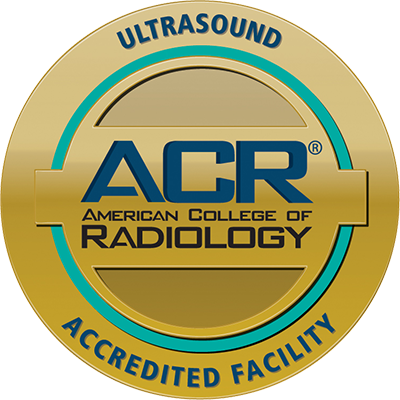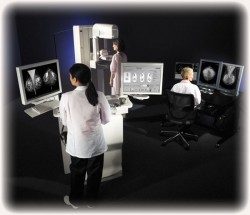
What is an ultrasound?
Ultrasound scanning, also called "ultrasound imaging" or "sonography," is a method of obtaining images from inside the human body through the use of high-frequency sound waves. The sound waves are recorded and displayed as a live image.
Because ultrasound images are captured in real time, they can show movement of internal tissues and organs, and enable physicians to see blood flow.
When is an ultrasound used?
Ultrasounds are used for a variety of reasons, one of the most common being during pregnancy to obtain pictures of a baby in the womb. Other types of ultrasound include:
- Abdomen
- Abdominal Doppler
- Breast
- Pelvis
- Renal transplant
- Testicular
- Thyroid
- Transvaginal
- Evaluation of the kidneys, liver, gallbladder, pancreas, spleen and blood vessels of the abdomen
- Rule out masses and aneurysms
Specialized exams
There are a number of specialized exams ultrasounds are used for:
- Breast-Thyroid biopsies
- Extensive diagnostic OB
- Hysterosonograms
- Soft tissue biopsies
Because ultrasounds provide real-time images, they can also be used to:
- Guide procedures such as needle biopsies, in which a needle is used to sample cells from an organ for laboratory testing.
- Help a physician determine the source of abdominal pain, such as stones in the gallbladder or appendix, or an inflamed appendix.
- Help identify the cause of enlargement of the abdominal organ.
Doppler Ultrasound is a special type of ultrasound study that is used in the examination of major blood vessels. These images can help the physician to see and evaluate:
- Blockages to blood flow, such as clots
- Build-up of plaque inside the vessel
- Congenital malformations
With knowledge about the speed and volume of blood flow gained from ultrasound imaging, the physician often can determine whether you are a good candidate for a procedure such as angioplasty.
How to prepare
Preparations will vary depending on the kind of exam you are having performed:
For any ultrasound please plan on arriving 25 minutes prior to your appointment for patient registration.
- Abdominal Ultrasound
- Nothing to eat or drink after midnight (or at least six hours prior to the exam).
- Abdomen and Pelvic Ultrasound (scheduled together)
- Nothing to eat at least six hours prior to exam.
- Drink 32 ounces of fluid one (1) hour prior to your exam. Please do not empty your bladder.
- Pelvic Ultrasound
- Drink 32 ounces of fluid one (1) hour prior to your exam.
- Please do not empty your bladder as a full bladder is necessary for the exam.
- Hysterosonogram
- Drink 32 ounces of fluid one (1) hour prior to your exam. Please do not empty your bladder as a full bladder is necessary for the exam.
- Your exam needs to be scheduled 7-10 days following the first day of your menstrual period.
- Please abstain for sexual intercourse following the first day of your period through the day of your appointment.
- Please take a home pregnancy test the morning of your exam to confirm your pregnancy status.
- OB (pregnancy) Ultrasound
- Drink 32 ounces of fluid one (1) hour prior to your exam. Please do not empty your bladder as a full bladder is necessary for the exam.
- Renal (kidney) Ultrasound
- Drink 16 ounces of fluid prior to your exam. A full bladder is helpful, so if possible, please refrain from emptying your bladder.
- Guided Biopsy of the Breast, Thyroid, or Soft Tissue
- Please refrain from aspirin products five (5) days prior to the exam.
- No other preparation required.
- Prior mammogram and ultrasound needed.
The following ultrasounds do not require any preparation:
- Carotid
- Breast
- Scrotum/Testicular
- Thyroid
- Venous Doppler (DVT)






